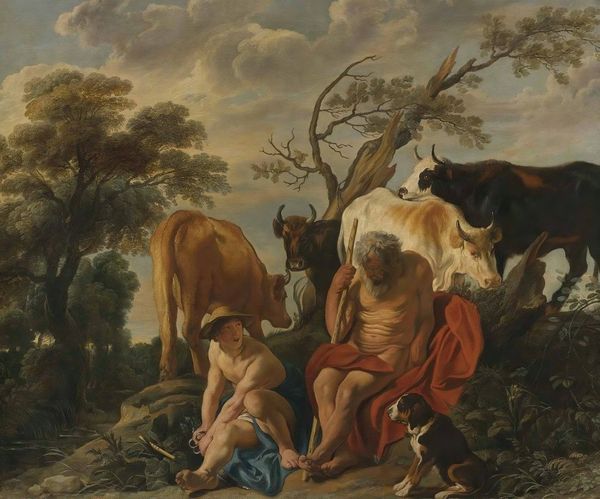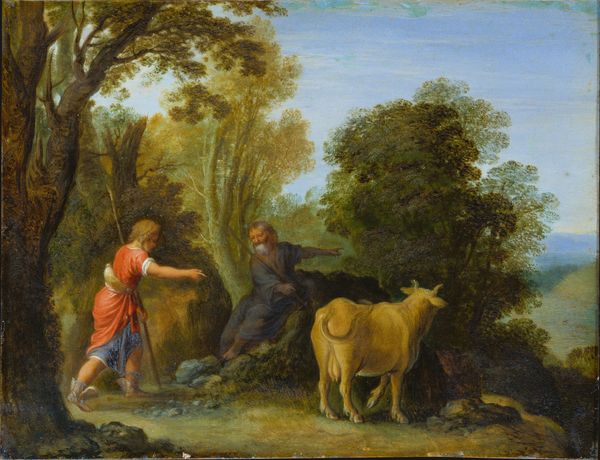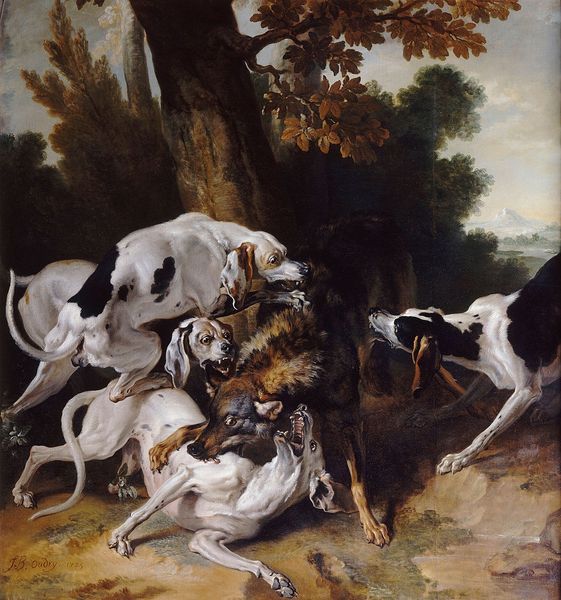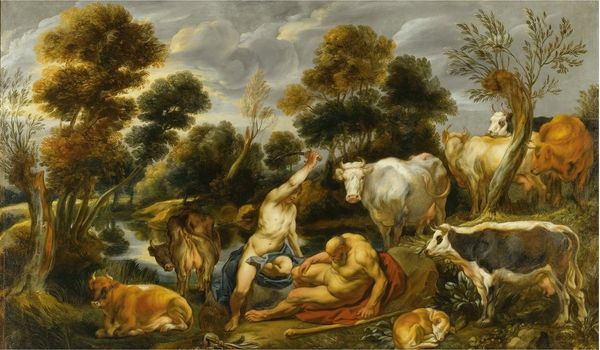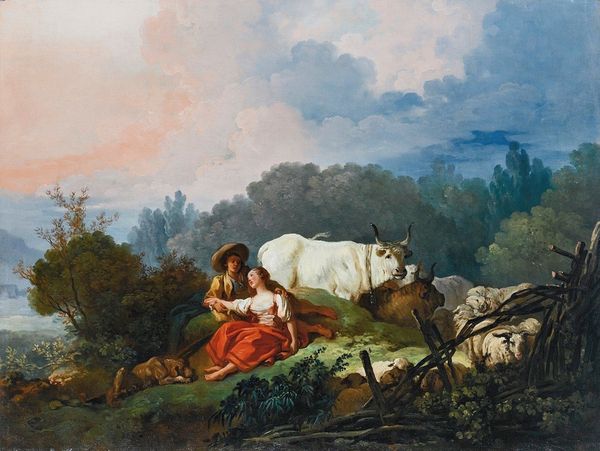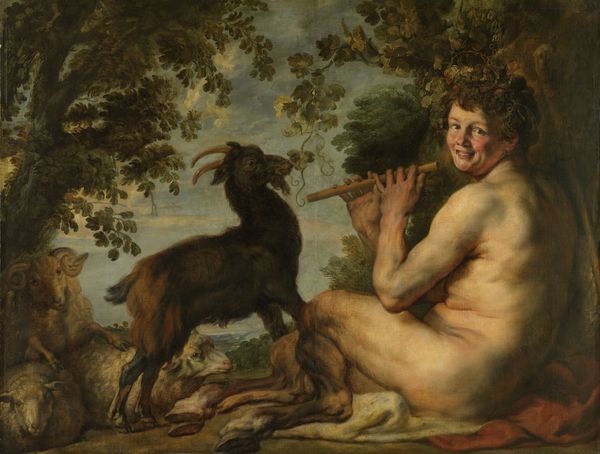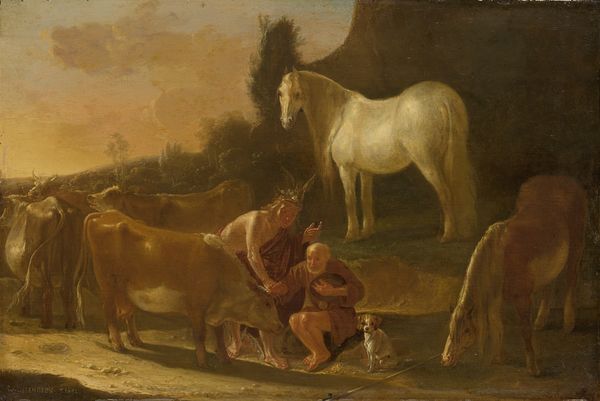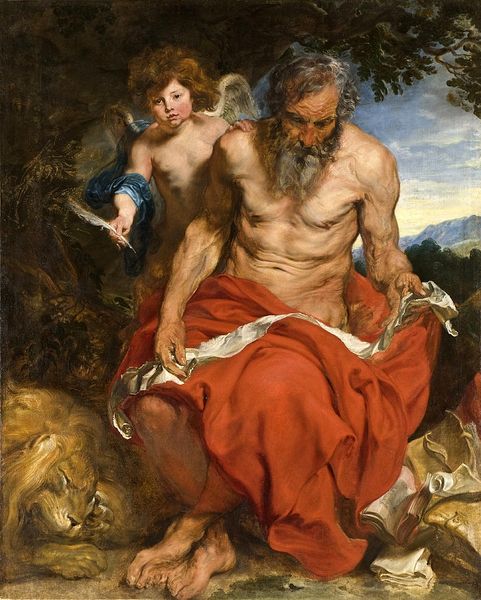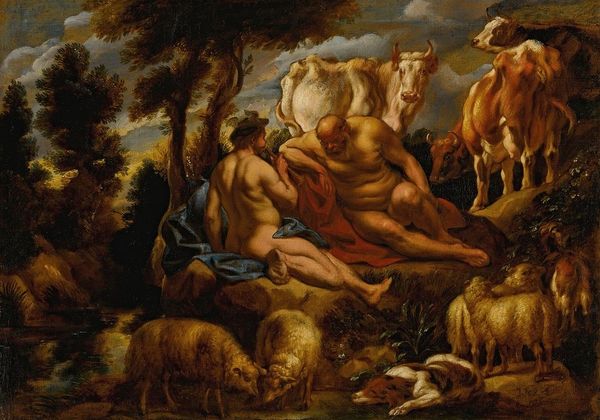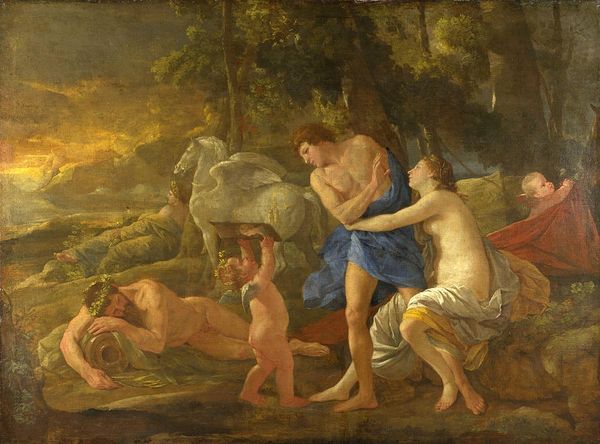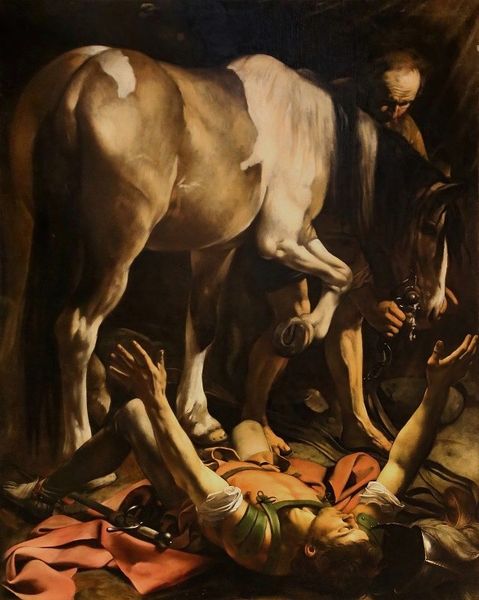
oil-paint
#
baroque
#
oil-paint
#
landscape
#
figuration
#
oil painting
#
roman-mythology
#
mythology
#
history-painting
Dimensions: 196 x 235 cm
Copyright: Public domain
Curator: I’m drawn to the tension in this composition. Editor: That’s interesting. Here we have "Mercury and Argos", an oil on canvas created around 1620 by Jacob Jordaens. It currently resides at the Musée des Beaux-Arts de Lyon. What strikes you as tense? Curator: The stillness. The way Mercury is so nonchalantly dispatching Argos. It feels weighted by a sense of inevitability, even fate. You know Argos, of course, is meant to have a hundred eyes, a vigilant watchman. He represents unsleeping observation. Editor: Exactly, employed by Juno to watch over Io, who has been transformed into a heifer. The imagery speaks to the socio-political context, the eternal dance between power and the watched subject. Jordaens uses the pastoral setting to soften the blow of what’s actually a divine assassination. Curator: And look how easily he’s lulled! This points to a much older story. In antiquity, the vigilance of many-eyed figures often spoke to divine omniscience, the inability to escape moral reckoning. Jordaens has certainly softened those associations; he’s made something so human, so… believable. The way even divine judgment comes wrapped in charm, or trickery. Editor: Do you think Jordaens is commenting on the power of the Church at the time, the charming face it presented to the world while acting as judge and executioner? There’s a palpable ambiguity, an unease with unchecked authority. Curator: Perhaps, but I think more about how little control we have over our stories. Mercury plays his pipes, Argos is enraptured, the cow lows… everything marches toward that single moment of fate, even in beauty and ignorance. It all seems rather deterministic. Editor: It's a stark reminder of the complexities of narratives, and how the artist, like Mercury himself, shapes them. Thank you for illuminating such layers of interpretation. Curator: And thank you, for reminding me of the importance of contextualizing such deeply-rooted symbolism within history. It is ever evolving!
Comments
No comments
Be the first to comment and join the conversation on the ultimate creative platform.
